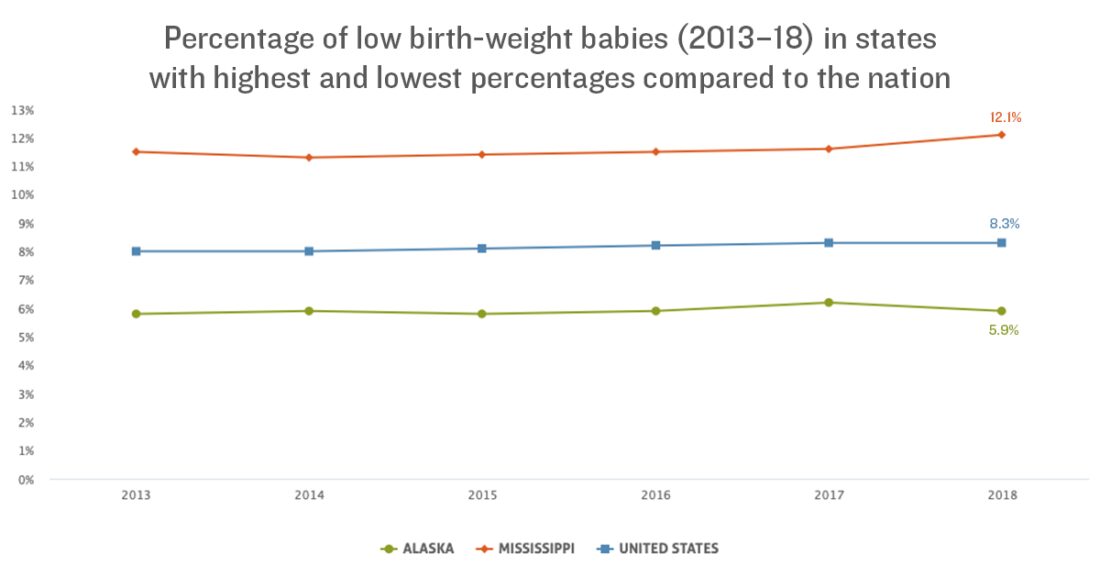Six-Year Stretch — From 2013 to 2018 — Without Progress on Low Birth-Weight Babies

A troubling trend is failing to reverse after several years of worsening and stagnation.
According to the latest data from the U.S. Centers for Disease Control and Prevention and the National Center for Health Statistics, the percentage of babies born at low birth weights in the United States held steady at 8.3% in 2018, the sixth straight year this figure has stayed the same or increased.
Low birth-weight babies are those who weigh less than 5.5 pounds when they are born. In 1990, only 7% of babies were born at low birth weights; the rate rose for a while, declined briefly and began to rise again in 2015. Compared with other affluent countries, the United States has one of the highest percentages of babies born at a low birth weight.
Because low birth-weight babies are more likely than average to experience developmental problems and short- and long-term disabilities and are at greater risk of dying before their first birthday, this statistic is considered to be among the most important indicators of well-being early in life. In fact, it is one of the 16 indicators included in the KIDS COUNT Index published each year in the KIDS COUNT Data Book.
Mississippi had the highest percentage of low birth-weight babies in 2018 among the states, with the figure jumping from 11.6% to 12.1% in one year. Alaska had the lowest percentage at 5.9%.
Race and ethnicity are birth-weight factors
Great variation has long existed in birth weight across races and ethnicities, and this continued to be true in 2018. The share of African American babies born at low birth weights (13.7%) was nearly twice the figure for white babies (6.9%). The rates for babies of two or more races (8.9%) and Asian and Pacific Islander babies (8.6%) also exceeded the national average. American Indian and Latino babies were the most likely to be born with a healthy birth weight.
Risk factors that lead to low birth-weight babies include smoking, poor nutrition, poverty, stress, infections and violence. Teenage mothers are more likely to give birth to low birth-weight babies, but the teen birth rate has fallen dramatically in the United States over several decades and fell significantly again between 2017 and 2018.






